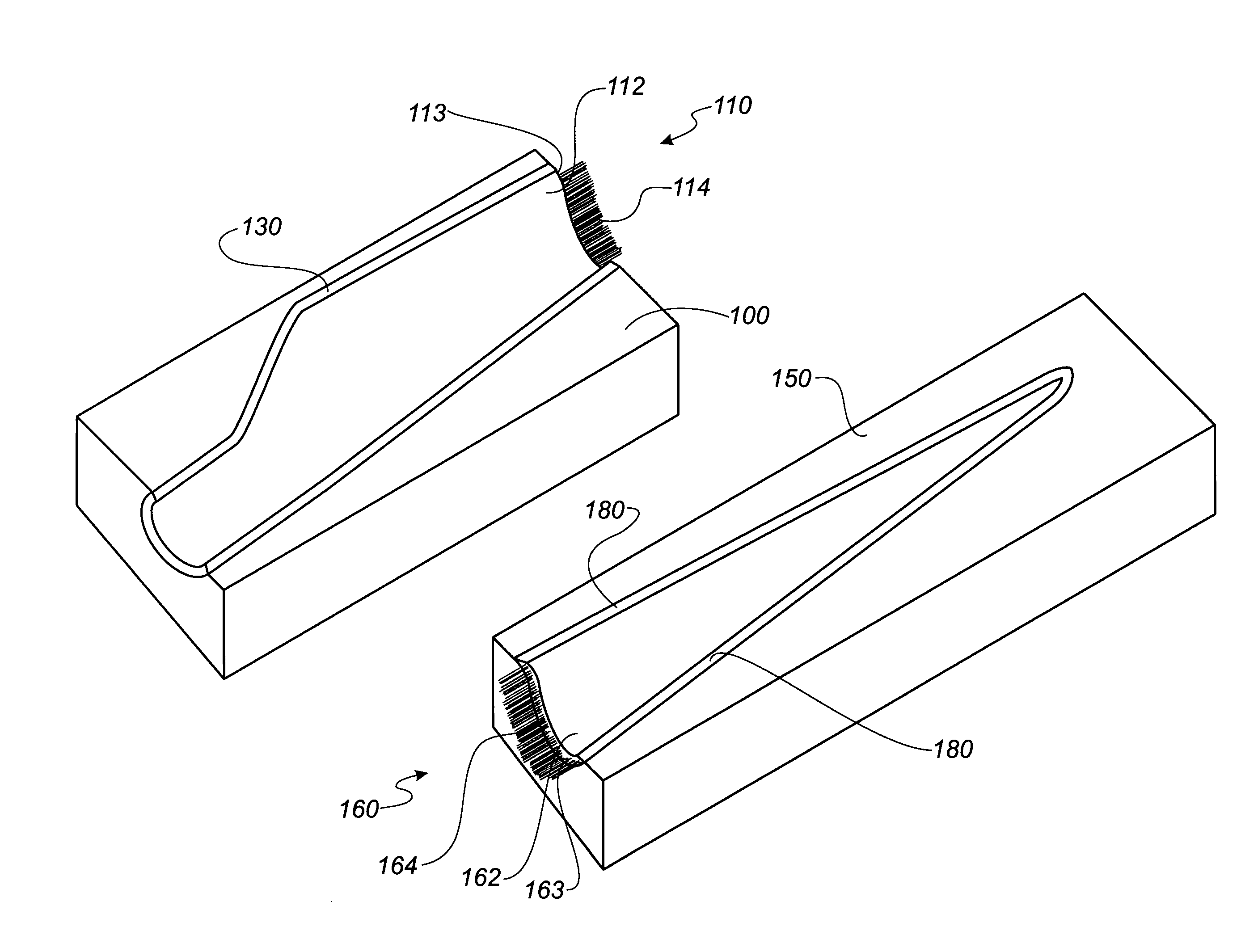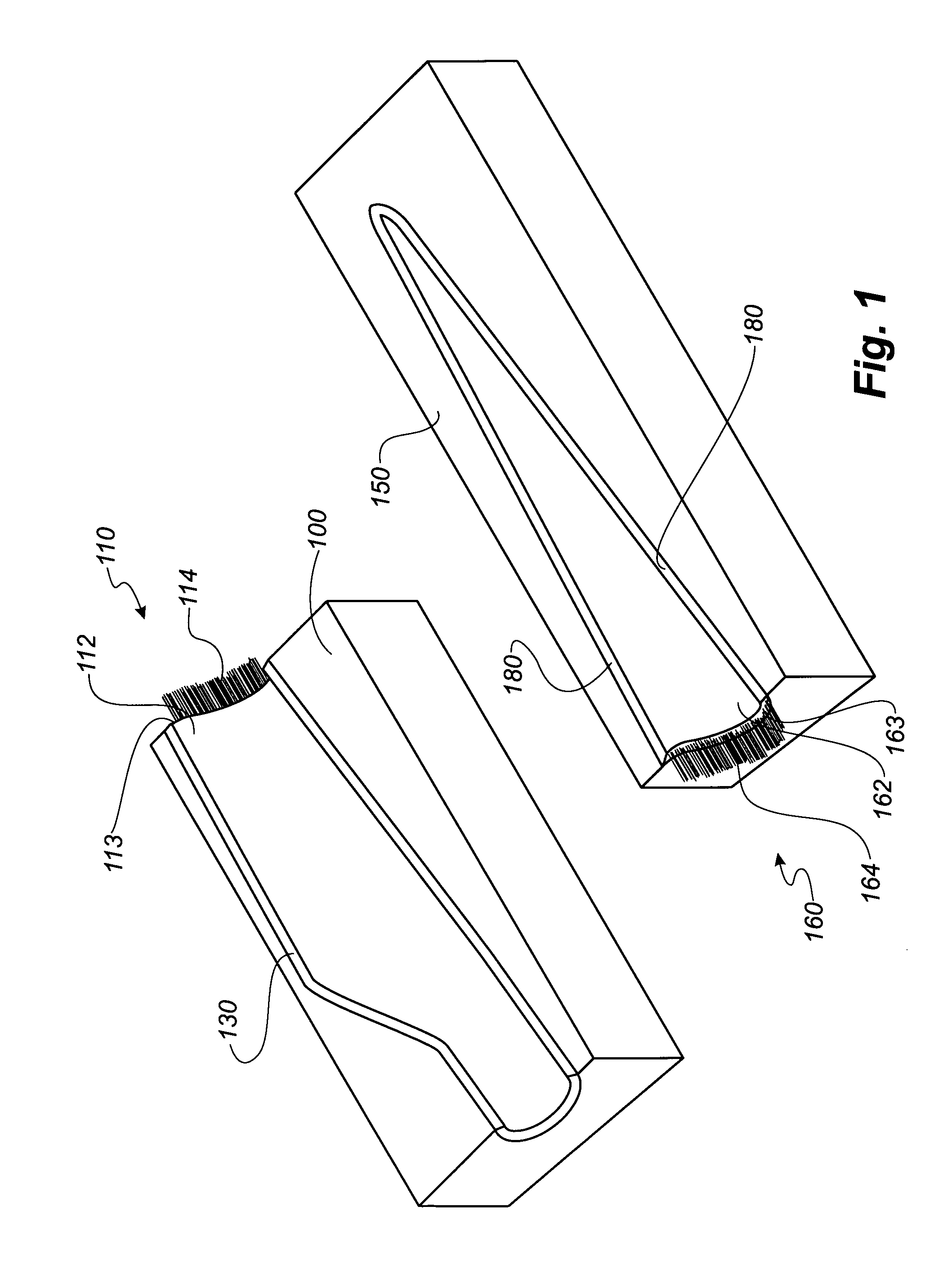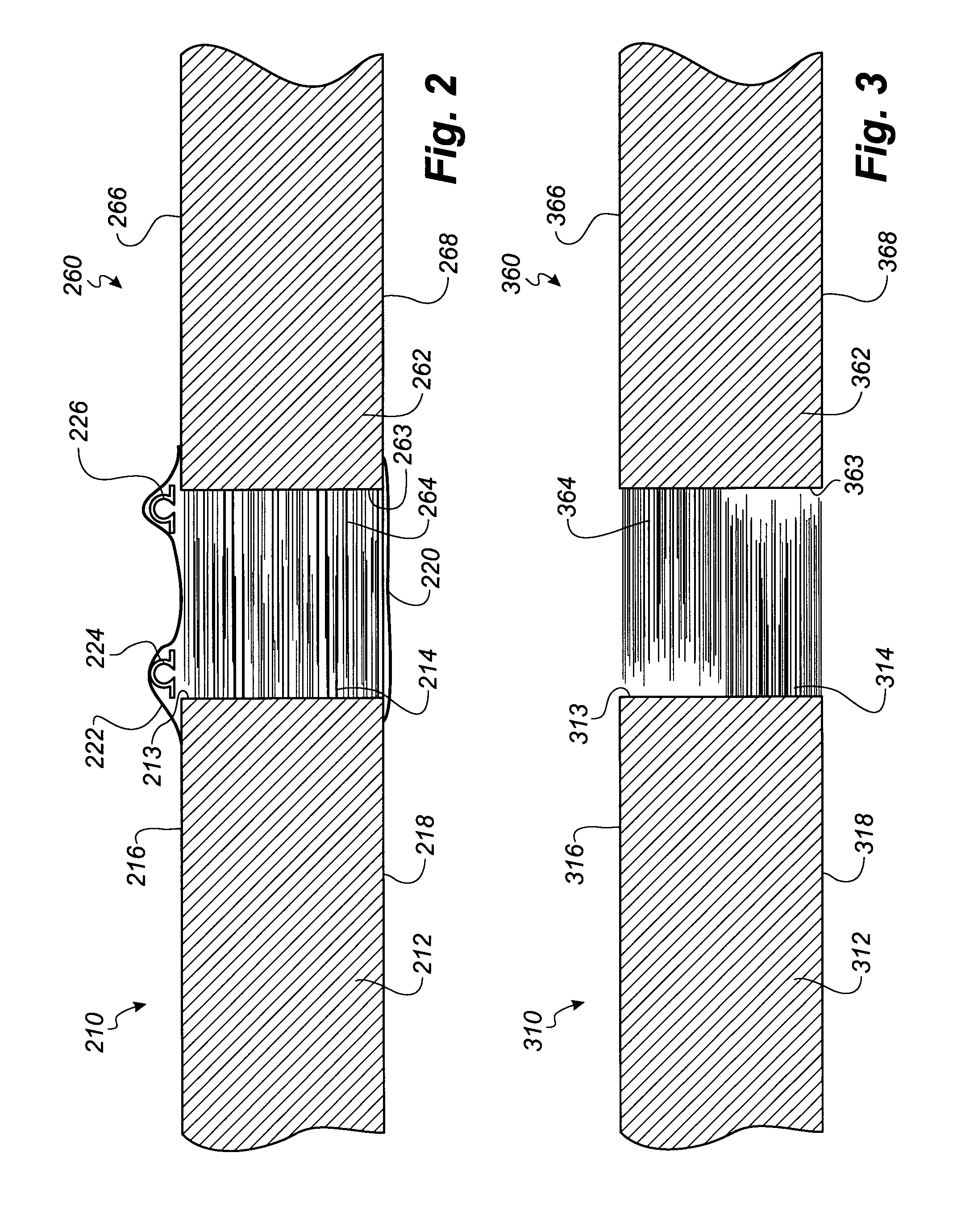Method of producing a composite structure via intermediate products, the related apparatus and a composite structure obtainable by the method
a composite structure and intermediate product technology, applied in the direction of lamination, domestic articles, renewable energy products, etc., can solve the problems of increasing length, increasing the height of the ceiling in the hall where the blades are manufactured, and increasing the size of the moulding assembly of such blades
- Summary
- Abstract
- Description
- Claims
- Application Information
AI Technical Summary
Benefits of technology
Problems solved by technology
Method used
Image
Examples
Embodiment Construction
[0050]FIG. 1 shows a first mould part 100 with a first moulded structure in form of a first blade shell part 110 according to the invention, and a second mould part 150 with a second moulded structure in form of a second blade shell part 160 according to the invention. The blade shell parts 150, 160 are sectional shell parts of a pressure side of a wind turbine blade, where the first blade shell part 150 forms a part of the blade, which is closest to a hub and includes the root area when the blade is mounted to the hub of a wind turbine blade, and the second blade shell part 160 forms a part of the blade, which is furthest from the hub and includes the blade tip.
[0051]The first blade shell part 110 includes a first cured composite part 112, which has been moulded in a moulding surface of the first mould part 100. The first cured composite part 112 comprises a fibre-reinforced polymer material and can be manufactured by any conventional methods, such as the VARTM method. The first cu...
PUM
| Property | Measurement | Unit |
|---|---|---|
| thickness | aaaaa | aaaaa |
| vacuum | aaaaa | aaaaa |
| structure | aaaaa | aaaaa |
Abstract
Description
Claims
Application Information
 Login to View More
Login to View More - R&D
- Intellectual Property
- Life Sciences
- Materials
- Tech Scout
- Unparalleled Data Quality
- Higher Quality Content
- 60% Fewer Hallucinations
Browse by: Latest US Patents, China's latest patents, Technical Efficacy Thesaurus, Application Domain, Technology Topic, Popular Technical Reports.
© 2025 PatSnap. All rights reserved.Legal|Privacy policy|Modern Slavery Act Transparency Statement|Sitemap|About US| Contact US: help@patsnap.com



